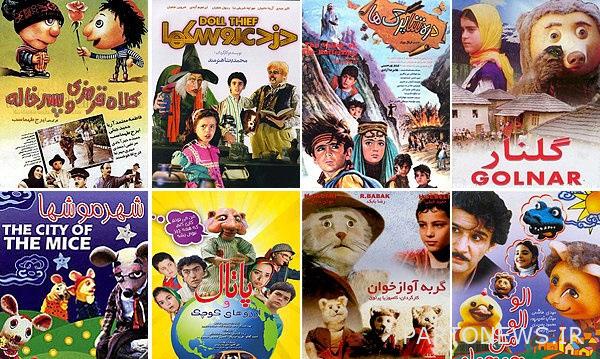Why did Iranian children’s cinema decline? The death of children’s cinema due to mismanagement

Government agencies do not have the right plan for the production of plays, and for this reason, they are always closed. In these circumstances, these institutions restrict the construction of the work; In other words, they erase the face of the issue in general. If these institutions want to produce children’s films, they can plan to produce a number of acceptable works. Sudden decision and relationship can not be the key to solving problems.
Theater News Base: It seems that children and adolescent cinema in Iran has many trustees, but the not-so-favorable times testify to the fact that cultural officials only seemingly care about the flourishing and growth of this cinema. Also, the vacancy of the limited production works of this cinema on the silver screen is strongly felt.
It should not be forgotten that children’s cinema was one of the most important and popular films in Iranian cinema in the 1960s and mid-1970s. Works that drew large audiences to cinemas and even won the title of best-selling film of the year.
Many critics of Iranian cinema believe that the existence of two active cultural institutions, namely the “Center for the Intellectual Development of Children and Adolescents” and the “Farabi Cinema Foundation” in those years, was a factor for this cinema to spend its golden days, but the question is; These institutions continue to exist these days, but why and what issues have caused the successful experience of the past to be forgotten and children’s cinema to be misled.
A stream that was forgotten
Productions about children’s cinema can be divided into two categories: “children’s films” and “films about children”. Nasser Avijeh (Children’s Theater Director) Regarding children’s cinema, he says: “If we want to talk about children’s cinema, we must consider the division of” children’s film “and” film for children “. For each of them, works were made in the 60’s, for example, “Basho Gharibeh Kouchak” is a product of the Children and Adolescents Intellectual Development Center, directed by Bahram Beizai, which is made about children. Movies like “City of Mice” are also made for children.
Among the institutions producing children’s films, the works produced by the Cinema Center of the Center for the Intellectual Development of Children and Adolescents, which was established in 1348 by Firooz Shiranloo; It was different from the films of Iranian cinema at that time. Filmmakers such as the late Abbas Kiarostami, Bahram Beizai, and Amir Naderi have all emerged from the center. The films of these filmmakers were for or about children. The center established a cinematic tradition that had a positive impact on adult cinema; In other words, the filmmakers who grew up in this center turned to making works for adults, and the method of filmmaking of these directors is still considered a model for filmmakers after decades. Today, although traces of this tradition remain in adult cinema, no trace of it remains in the children’s section!
It can be said that; Kanoon’s plays had realistic and simple stories. The actors were often non-actors and were filmed in real locations. These works focus on the lives of poor and deprived urban and rural children, their regrets and failures.
Producers have no desire to screen or make
The issue of screening children’s cinema is also one of the most important issues in the field of screening Iranian cinema. Productions in children’s and adolescents’ cinema are limited, but these limited works are only screened at festivals and are less often shown to the public. Of course, the pleasant events that took place in the first three years of the 1990s ignited the flames of hope in the hearts of the filmmakers, which promised the return of the prosperous days of the past. in this period; Iraj Tahmast and Marzieh Boroumand, who had a history of making children’s works, started making new works. They were able to draw a large audience to cinemas. But it did not take long for this current to decline and everything to return to its low state.
It seems that after the successful but short-lived experience of the early 1990s, producers changed their minds, preferring to make fewer works or make their products less available to the public. “Mr. Beizai and many others were making films about children, all concerned with cultural issues, but for whatever reason they are currently deprived of the opportunity to make films,” Avijeh said. It can be said that the lack of support is one of the reasons that kept these filmmakers from making films for children. Also, producers are not interested in producing such works.
According to this director; Works made for children are in a better condition. The number of these works has increased in the home theater section, but a limited number of works have been made for cinemas. Some films have been made but not released to the public.
The production and supply of each form part of a theatrical work. When a good product is produced, it must also be presented to the audience. A play is difficult to produce, but for various reasons it misses the opportunity to be seen, such a project is considered a failure.
They have money but they are unplanned
After the revolution and the change of general attitudes towards culture and art, the flow of filmmaking in children’s cinema remained silent for a while. Many cultural centers were closed due to changing attitudes, but the center was able to survive, although the nature of its concerns and ideology changed from pre-revolutionary times. Kamal Kharrazi was the first director of the center to have a short time. After Kharazi, Alireza Zarrin was selected to manage this collection. Cinema was one of the issues that attracted the attention of this cultural director. The return of filmmakers who made films in the 1940s was able to streamline children’s cinema at the time. But today, the situation of this cultural complex is not the same as in the past, and its production in the field of children and adolescents has been minimized.
Avijeh explains: The level of production of children’s plays has decreased. According to the directors of the center, the reduction of budget and capital has caused the number of production works to be less than in the past. Of course, with all these interpretations, the center continues its activities and creates works that participate in various festivals but do not have the opportunity to screen. Until there is an opportunity for public screening, people will think that no successful work has been made.
Over the years, another government agency has been active in the field of children’s film. The Farabi Cinema Foundation was established in 1962, and after a while, it established its own section for children and adolescents. The film foundation had some success in 1962-74, but since the mid-1970s it has not been able to achieve its past success and has failed in many projects. Many critics believe that although the foundation is well-funded, there is no proper planning for the budget.
According to Avijeh; Capital is in the hands of government institutions, and this capital can be best spent. The Farabi Foundation has often spent a lot of money on children’s cinema, but has not had the right planning. When we are on the eve of children’s film festivals, the directors of this series communicate with the directors they want and encourage them to make films. It is natural that the time interval between the festival and the request to make a film is short; A poor quality work will be made.
The director continues: Government agencies do not have the right plan and program for the production of plays, and for this reason, they are always closed. In these circumstances, these institutions restrict the construction of the work; In other words, they erase the face of the issue in general. If these institutions want to produce children’s films, they can plan to produce a number of acceptable works. Sudden decision and relationship can not be the key to solving problems.
Children and adolescent cinema after the revolution was not limited to Kanoon and Farabi films. At that time, less than a handful of works in the field of children and adolescents, such as “Golnar” by the late Composia Partovi, were made in the independent section, which were very fun and childish.
Knowing the audience is important
One of the problems with our cinema since the mid-1970s is that, despite policy efforts to improve the situation, the films were not usually children’s films and were often made in the presence of or about the child. Films that did not take into account the spirits of children and even harassed them. Some of these films were produced by the same sponsors who worked to make children’s plays. “When a filmmaker decides to make a play, he has to pay attention to what age group the audience of the work is,” says Avijeh. Making a children’s film requires a thorough understanding of their world. Many filmmakers who enter the field think that they can make children’s works only because they are familiar with cinematic techniques, but they often fail in their projects. Fertilizer cinema needs to know more about the audience.

